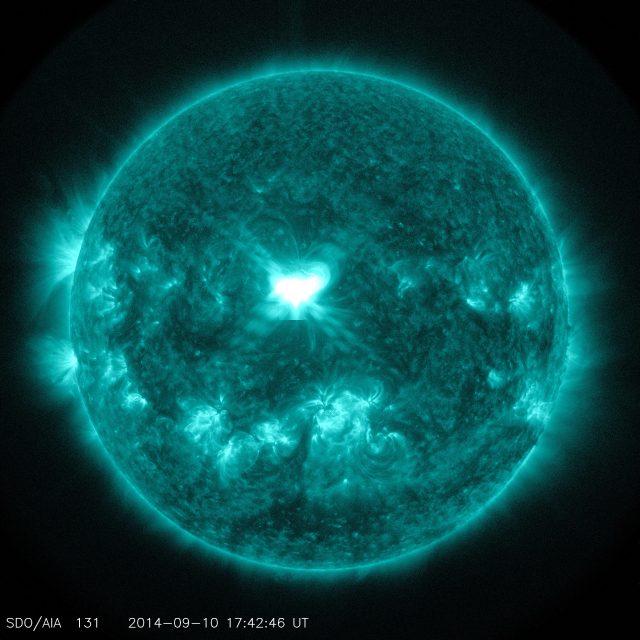
Dark matter is proving to be a rather frustrating topic for physicists, cosmologists, and other outward-looking scientists. All the data for dark matter is gravitational, and the lack of other evidence only draws a box on the particle map where scientists have scrawled, “Here be dark matter.”
Dark matter interacts so weakly with ordinary matter that we simply don’t notice it over the racket of ordinary matter drunkenly shouting at the Universe’s particle bar. What we need is to give it a place to shine—to let it take the spotlight and sing karaoke. It turns out that the inside of a star might just be that place.
Disappointing flashes in the dark
Most proposals for dark matter candidates use the simplest possible extension to the Standard Model. These extensions allow theoretical physicists to estimate how such particles would interact with ordinary matter.
Based on these ideas, experimental physicists have set up large tanks of Xenon in the deepest, darkest holes they could find and have surrounded the tanks with light detectors, looking for hints of rare events—dark matter colliding with ordinary matter. These are tightly controlled experiments, where every flash of light is analyzed. The non-dark-matter chain reactions that lead to light flashes are known and controlled for.
So far, however, nothing concrete has emerged.
In the meantime, because we don’t actually know what dark matter is, theoretical physicists have been letting their imaginations run wild. They have created a zoo of possible dark matter particles. Extensions to the Standard Model allow almost anything, so there are proposals for atoms, molecules, and even stars made out of dark matter. Yes, there could be an entirely invisible mirror universe holding our own Universe together.
Exciting stellar flares
If it's true that dark matter can form structures, there are probably asteroids of dark matter flying around the Universe. Occasionally, dark matter asteroids will collide with stars, and then things get very exciting.
Dark matter in an asteroid interacting with real matter in a star basically amounts to unity (because stars are rather dense). Based on what we know about the Universe and how galaxies form, dark matter asteroids have to be moving very fast.
"Fast," in this case, means "faster than the speed of sound within a star." So when an asteroid hits a star, it produces a cylindrically shaped acoustic shock wave. The star acts as an acoustic lens—a star is less dense and bends acoustic rays toward the surface—so the shock wave is loosely focused around the entry point of the asteroid.
This process acts to intensify the shock wave in a local region rather than letting it spread out. Then, as the shock wave gets closer to the surface, its speed (relative to the speed of sound) gets higher, making its effect on the stellar medium greater.
These two processes are sufficient to cause the star to emit a burst of X-rays, with a tail of emission extending into visible light. In other words, there is a burst of light that is definitely visible to our observational tools.
Solar flares are common
The researchers used the estimated dark matter density of a globular cluster called 47 Tuc to calculate how often flares induced by dark asteroids would be visible to the Hubble Space Telescope (if it had the right filters in place). The scientists concluded that a week of observation time should be sufficient to detect flares. They then looked back at Hubble’s database and found that 47 Tuc had been the subject of a week-long observation—but with the wrong filter in place. Unsurprisingly, it didn't find anything.
In addition to Hubble, the researchers also considered a soon-to-be deployed wide-field UV space telescope. In this case, the researchers propose looking at K-dwarfs (a set of relatively cold stars in the main sequence) that are local by astronomy standards. Indeed, if dark matter asteroids do exist and behave as the researchers predict, this telescope cannot avoid detecting the resulting flares. The same would be true for any others that are also designed to survey wide sections of the sky in the ultraviolet.
Even our own Sun would be subject to flares caused by dark asteroids. The researchers estimate that the Sun should collide with a small asteroid every year. The evidence—solar flares—may even already be in the observational record.
reader comments
144